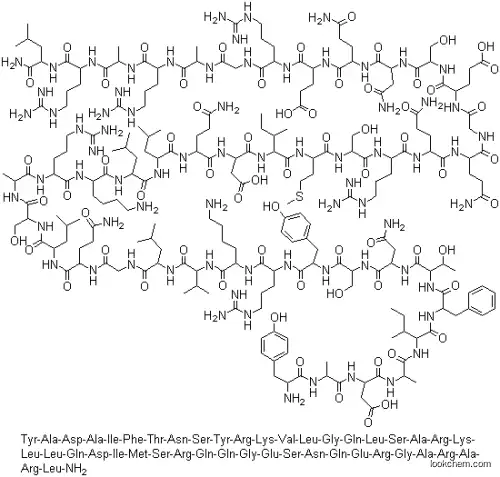Base Information
Edit
- Chemical Name:Somatorelin
- CAS No.:83930-13-6
- Molecular Formula:C215H358N72O66S
- Molecular Weight:5039.65
- Hs Code.:
- DSSTox Substance ID:DTXSID40232828
- NCI Thesaurus Code:C171035
- Wikipedia:Somatorelin
- Mol file:83930-13-6.mol

Synonyms:Somatorelin;83930-13-6;Somatorelin [INN];UNII-4UR7N9Z9MM;4UR7N9Z9MM;Human growth hormone-releasing factor;GRF (1-44), human;DTXSID40232828;PD151144


